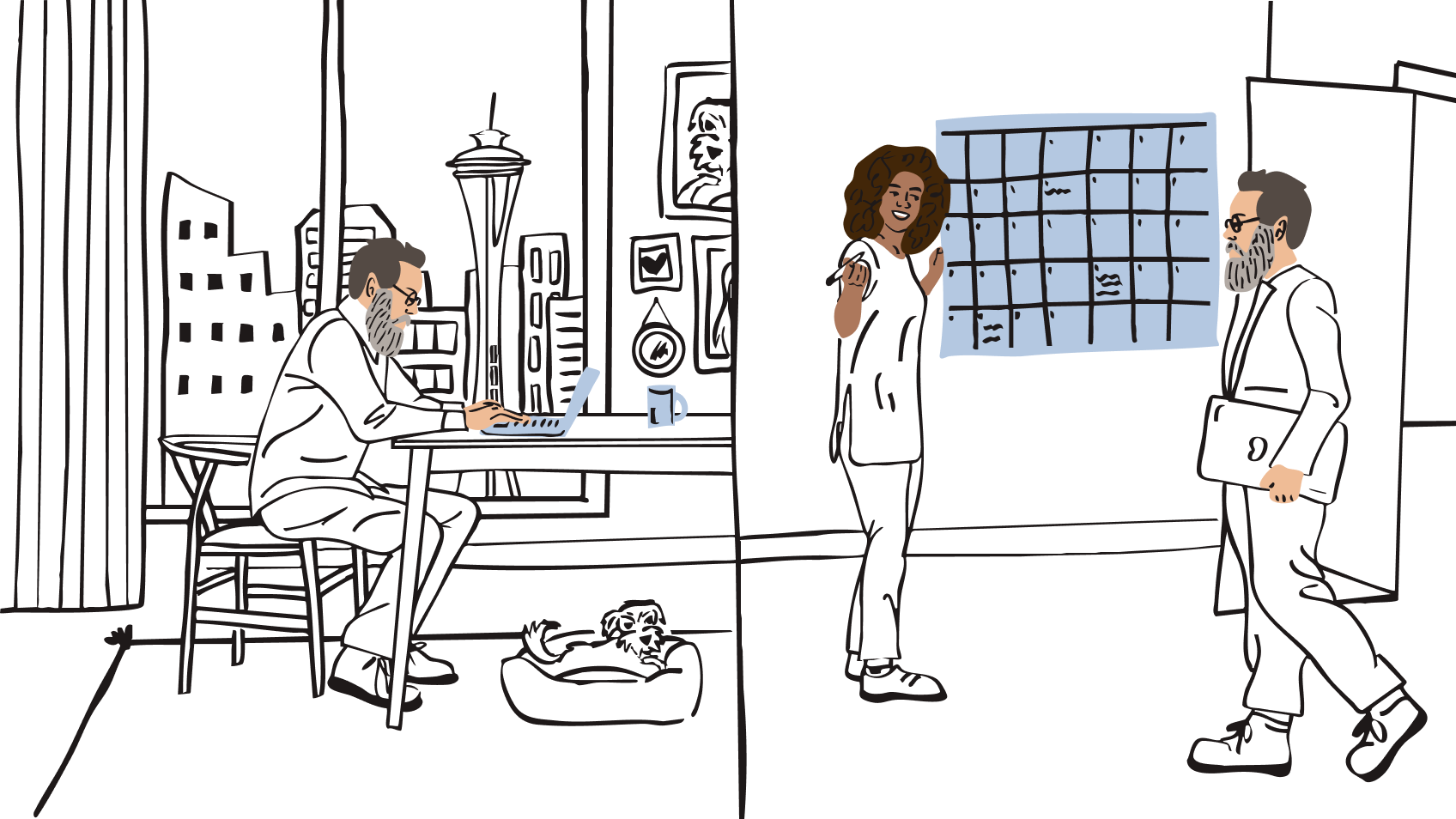Step 1: Manage your meetings
To stay as present as possible, audit your calendar before you arrive at the office, event or offsite. Reschedule any non-urgent virtual meetings and keep those that are business critical.
- If you work in a primarily remote setting and are attending an offsite, consult with the host to determine if the agenda can accommodate the meeting or if a reschedule is required. If you’re the meeting owner, delegate to another team member or convert the meeting to async with clear guidance for all participants. If you’re a contributor, reach out to the meeting owner at least 48 hours in advance to ensure your absence won’t be an issue.
- If you work in a hybrid setting where you go into the office a few days per week or month, prioritize meetings on those days with others who will be in the same location, to optimize in-person time together.
Step 2: Over-schedule buffer time
When working virtually, it’s easier to timebox your day and trust your schedule to remain fairly stable. However, working in-person introduces more variables, like unscheduled chats with people you cross paths with. Schedule more buffer time than you think you’ll need. Block time to commute from one location to another and to account for any impromptu meetings while in-person. Just as you’d block focus time to improve focus and limit distractions, it’s helpful to schedule buffer time. This allows you to catch up with work that’s happening elsewhere, and prevents larger backlogs from overwhelming you.
If working in a hybrid setting, build buffer time into your meeting agendas, or make an effort to end meetings a few minutes early. Not only does this give in-person attendees time to get to their next location, it also allows everyone the time to align on action items from the last meeting and provides space to prepare for the next.
If you are an offsite planner, allow buffer time for breaks throughout the day. Even 5-10 minute refreshment breaks will help both in-person and virtual attendees renew focus and remain engaged. Ensure you build in extra time when planning each individual session too, even if this means reducing the overall number of topics within the agenda. Buffer time allows space for Q&A and natural discussion to happen when creativity has sparked and the group is on a roll.
Step 3: Understand trade-offs
The world won’t stop spinning during your in-office days, offsites, or other in-person engagements. For example, you may need to excuse yourself from a team dinner to manage business critical messages. If you are unsure on how to prioritize, align with the offsite hosts or your stakeholders as needed, while still keeping business critical work moving forward. On the other hand, you may need to inform your team that you will be slower to reply when you are in-person so you can stay present. Understand and plan for these trade-offs before heading out. This creates clarity for your team and reduces in-the-moment decisions, which frees you up to be present as well as productive while engaging in-person.


